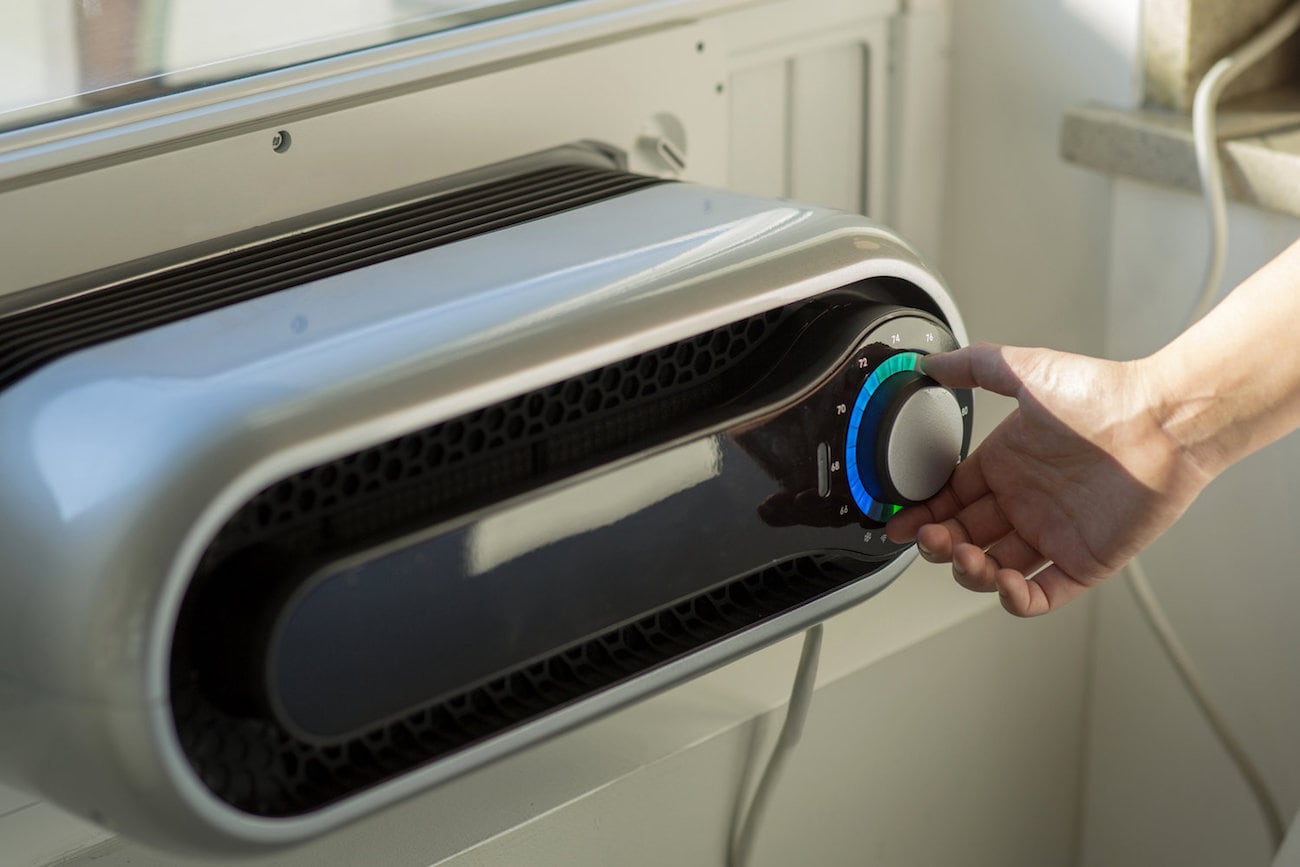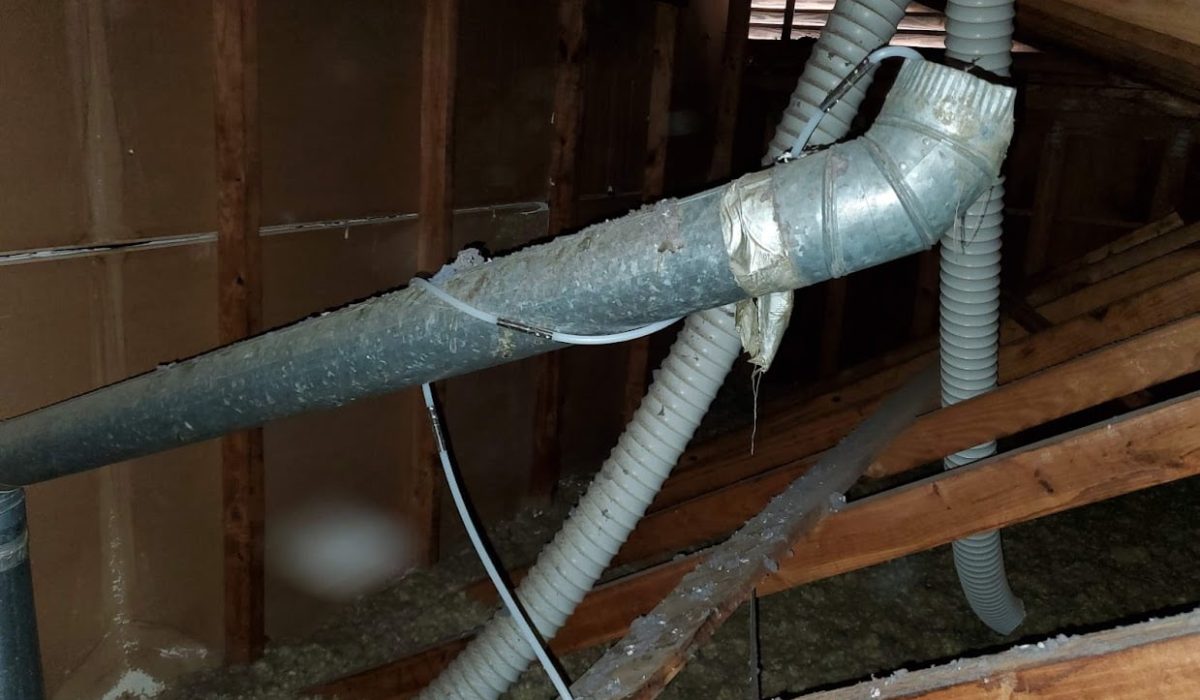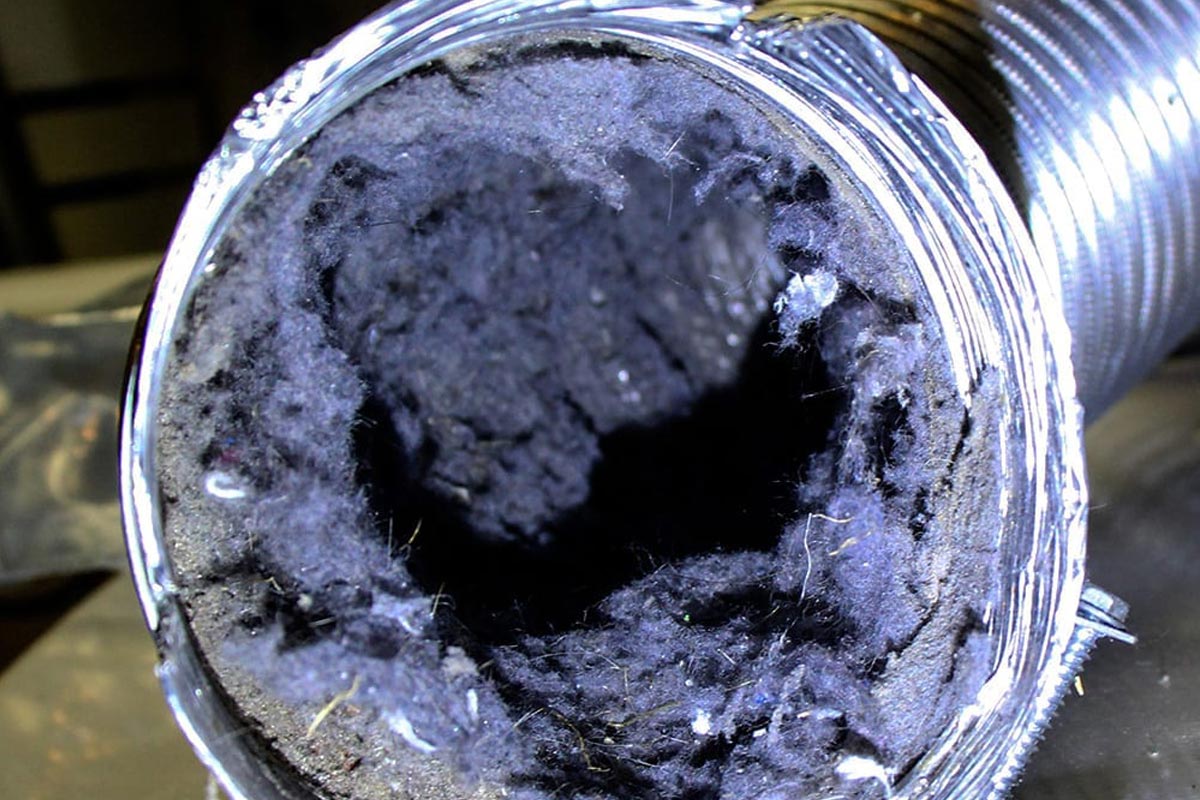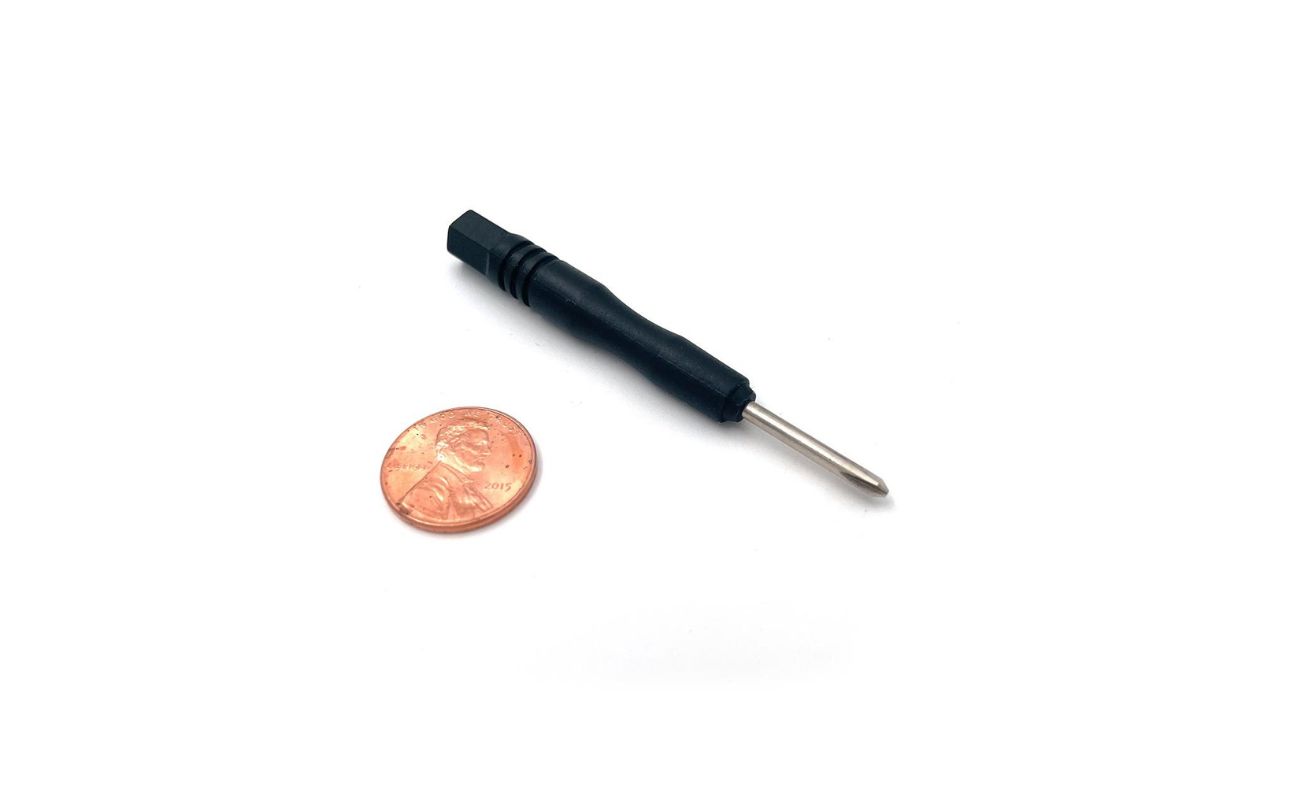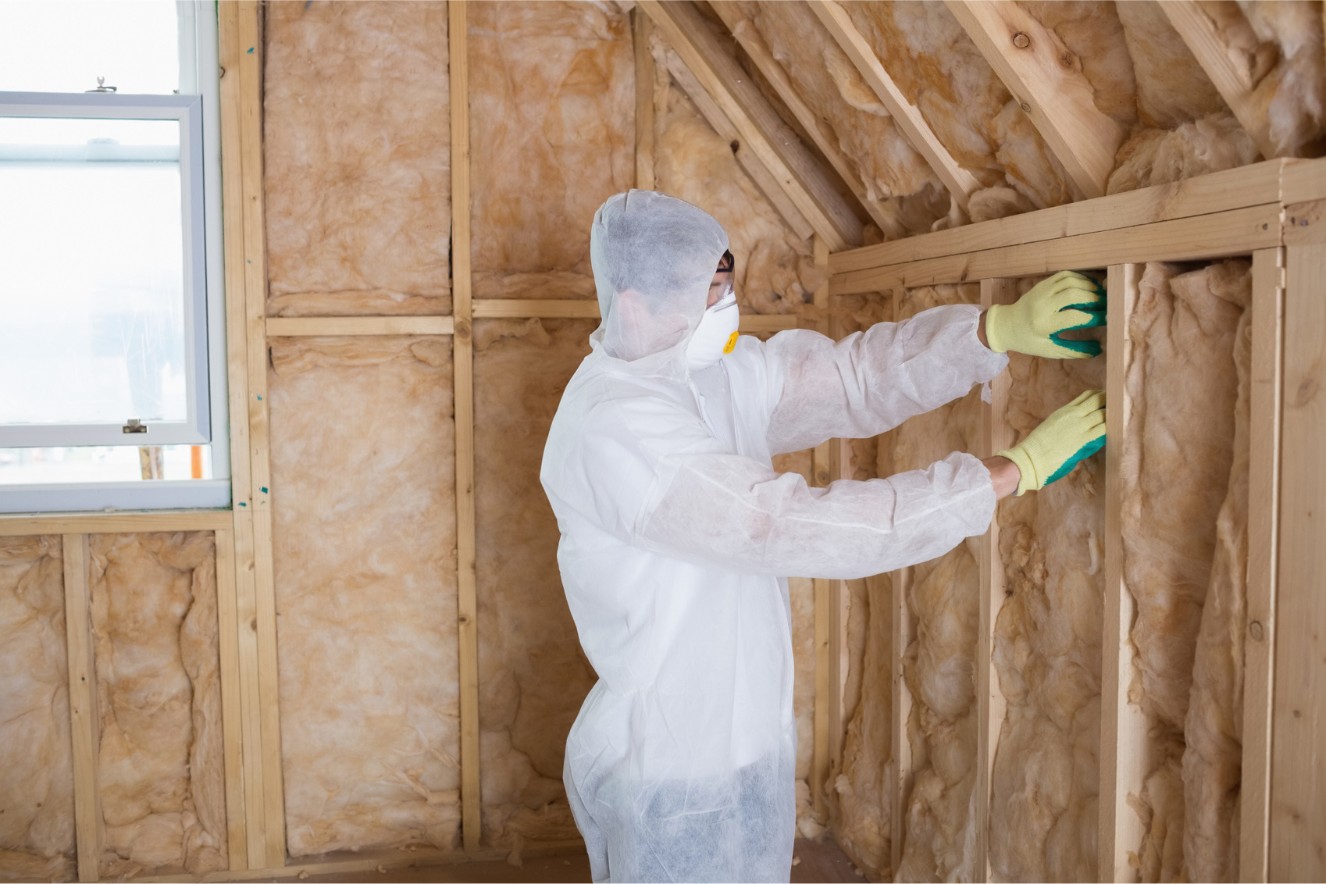Home>Home Maintenance>What Happens If You Don’t Vent A Portable Air Conditioner
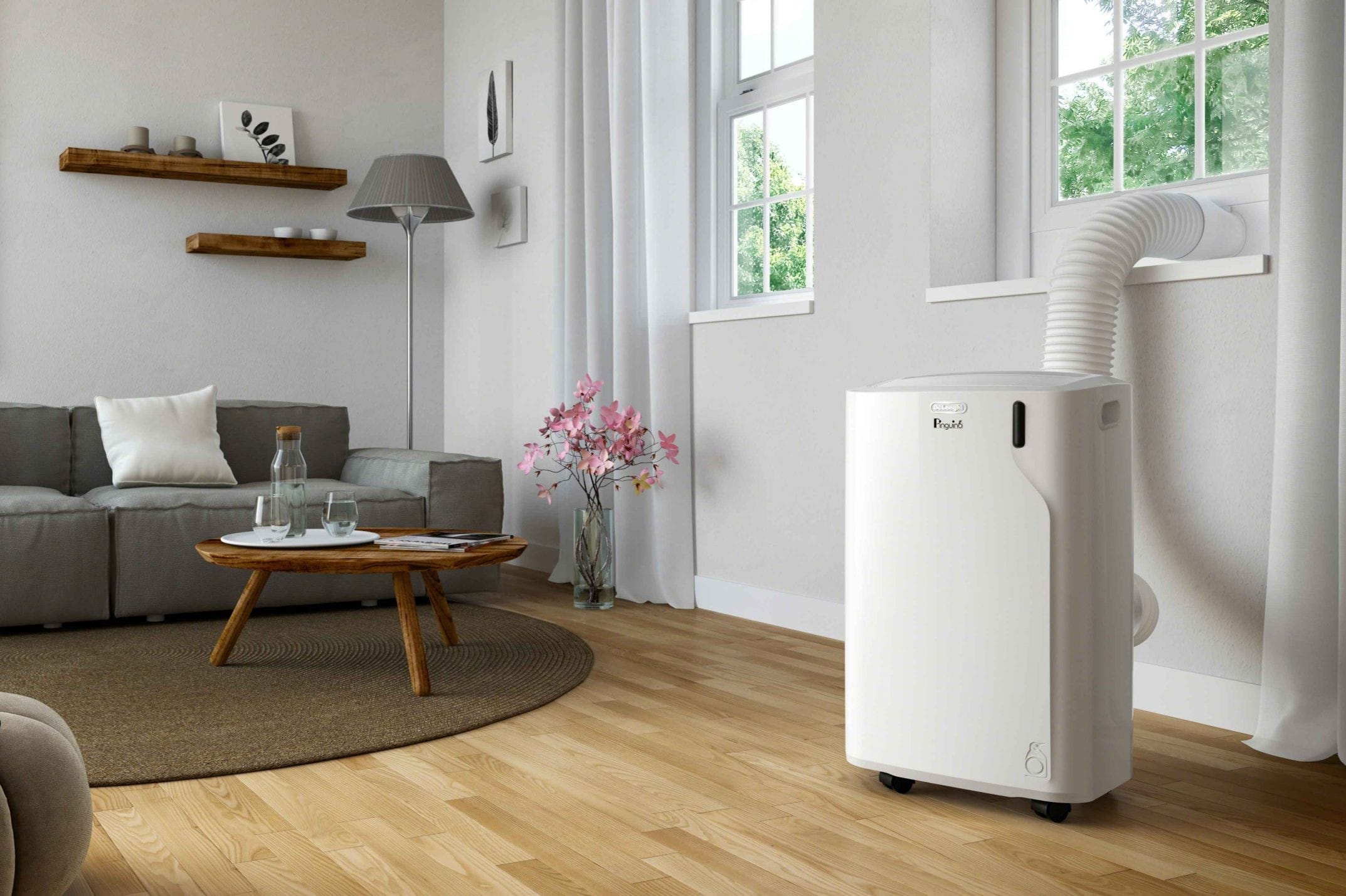

Home Maintenance
What Happens If You Don’t Vent A Portable Air Conditioner
Modified: August 28, 2024
Discover the consequences of not properly venting your portable air conditioner and learn why proper home maintenance is crucial for optimal cooling efficiency.
(Many of the links in this article redirect to a specific reviewed product. Your purchase of these products through affiliate links helps to generate commission for Storables.com, at no extra cost. Learn more)
Introduction
During the scorching summer months, a portable air conditioner can be a lifesaver, providing much-needed relief from the sweltering heat. These versatile cooling units offer convenience and flexibility, allowing you to create a comfortable indoor environment wherever you go. However, many people underestimate the importance of properly venting their portable air conditioners. In this article, we will explore what happens if you don’t vent a portable air conditioner and shed light on the potential consequences of neglecting this crucial step.
Before we delve into the consequences, let’s first understand how portable air conditioners work. Unlike traditional window units or central AC systems, portable air conditioners don’t require permanent installation or complex ductwork. These units are designed to cool a specific area by removing hot air from the room and expelling it outside through a vent or exhaust hose.
The venting process is essential for the proper operation of a portable air conditioner. When the unit extracts warm air from the room, it needs a way to release that heat outdoors. Without proper ventilation, the hot air remains trapped inside, negating the cooling effects of the air conditioner and potentially creating a host of problems.
So, what happens if you neglect to vent a portable air conditioner? Let’s take a closer look at the consequences:
Key Takeaways:
- Properly venting a portable air conditioner is crucial for efficient cooling, reduced energy consumption, and a longer lifespan. Follow manufacturer instructions, seal connections, and keep the venting system clean for optimal performance.
- Neglecting to vent a portable air conditioner can lead to increased energy consumption, inefficient cooling, and potential health concerns. Proper venting ensures effective heat removal, humidity control, and improved indoor air quality.
Read more: What Happens To Grass If You Dont Cut It
Understanding Portable Air Conditioners
Before we delve into the importance of venting a portable air conditioner, let’s take a moment to understand how these units work. Portable air conditioners are self-contained cooling systems that are designed to be easily moved from one room to another. They operate on the same basic principle as traditional air conditioners, which involves extracting heat from a room and circulating cool air in its place.
Portable air conditioners are typically comprised of four main components: a compressor, a condenser, an evaporator, and a fan. The compressor and condenser work together to cool the air, while the evaporator removes humidity from the room. The fan then circulates the cooled air throughout the space.
Unlike central air conditioning systems, which require extensive ductwork to distribute cool air throughout a building, portable air conditioners use a single exhaust hose or vent to expel hot air and humidity outside. This makes them a more flexible and accessible option for cooling single rooms or small spaces.
Portable air conditioners come in various sizes and capacities, ranging from compact units suitable for small bedrooms or offices to larger models that can cool larger living areas. When selecting a portable unit, it’s important to consider the square footage of the space you need to cool, as well as any specific requirements or features you may need, such as a built-in dehumidifier or programmable thermostat.
Understanding how portable air conditioners function is essential for grasping the importance of proper ventilation. Without adequate ventilation, the cooling efficiency of the unit can be compromised, leading to increased energy consumption, inefficient cooling performance, and potential health issues.
Now that we have a clear understanding of portable air conditioners, let’s explore why proper venting is crucial to their operation.
Importance of Venting a Portable Air Conditioner
Proper venting is absolutely crucial when it comes to operating a portable air conditioner efficiently and effectively. Venting allows the unit to remove hot air from the room, maintaining a cooler and more comfortable indoor environment. Here are a few reasons why venting is so important:
- Heat Removal: Portable air conditioners work by extracting heat from a room and releasing it outside. Without proper venting, the hot air cannot be expelled, causing it to recirculate back into the room. This can lead to a constant cycle of warm air being cooled and released back into the room, ultimately resulting in inefficient cooling performance.
- Humidity Control: In addition to cooling the air, portable air conditioners also help to dehumidify the room. Excessive humidity can make the indoor environment feel sticky and uncomfortable. Venting allows the unit to expel the moisture extracted from the air, keeping the humidity at a more manageable level.
- Prevention of Condensation: If hot air is not properly vented, it can result in condensation within the portable air conditioner. This can lead to water leakage, potentially damaging the unit and the surrounding area. By venting out the hot air, you minimize the risk of condensation buildup and subsequent water damage.
- Energy Efficiency: When a portable air conditioner is not vented, it has to work harder to cool the room, consuming more energy in the process. Proper venting allows the unit to operate at its optimum efficiency, reducing energy consumption and saving you money on utility bills.
- Extended Lifespan: By venting a portable air conditioner, you help prolong its lifespan. When the unit can expel hot air and operate with proper ventilation, it experiences less strain and wear and tear. This can result in a more reliable and long-lasting cooling solution.
It’s important to note that the venting process for a portable air conditioner may vary depending on the unit’s design. Some portable air conditioners come with an exhaust hose that needs to be connected to a window or a venting kit specifically designed for the unit. Others may require a more intricate setup involving a dual-hose system or a ceiling vent. It’s crucial to follow the manufacturer’s instructions regarding venting requirements to ensure optimal performance.
Now that we understand the importance of venting a portable air conditioner, let’s explore what can happen if you neglect this crucial step.
Consequences of Not Venting a Portable Air Conditioner
Not venting a portable air conditioner can have a range of negative consequences, compromising its cooling performance, energy efficiency, and overall lifespan. Let’s take a closer look at the potential repercussions:
- Increased Energy Consumption: Without proper ventilation, a portable air conditioner has to work harder to cool the room. This inefficiency leads to increased energy consumption and higher electricity bills. The unit will continuously struggle to reach and maintain the desired temperature, resulting in a waste of energy and financial resources.
- Inefficient Cooling Performance: When a portable air conditioner is not vented, the hot air it extracts from the room becomes trapped. This trapped hot air mixes with the cool air, creating a cycle of warm air being cooled and released back into the room. As a result, the unit struggles to maintain the desired temperature, and the cooling performance becomes subpar. You may find that the room feels stuffy and uncomfortable, even when the air conditioner is running at maximum capacity.
- Reduced Lifespan of the Air Conditioner: Operating a portable air conditioner without proper ventilation puts unnecessary stress on the unit. The lack of ventilation causes the compressor and other components to overwork, leading to increased wear and tear. Over time, this can shorten the lifespan of the air conditioner, necessitating repairs or premature replacement.
- Potential Health Concerns: Not venting a portable air conditioner can create an unhealthy indoor environment. Without proper ventilation, the air becomes stagnant and can accumulate dust, allergens, and other airborne pollutants. This can lead to poor air quality, which can trigger respiratory issues, allergies, and other health problems, particularly for individuals with pre-existing respiratory conditions.
These consequences highlight the critical nature of venting a portable air conditioner. By ensuring proper ventilation, you can maximize the unit’s cooling efficiency, reduce energy consumption, extend its lifespan, and maintain a healthier indoor environment.
Now that we’re aware of the potential problems that can arise from not venting a portable air conditioner, let’s explore some tips for properly venting these units.
Increased Energy Consumption
One of the significant consequences of not venting a portable air conditioner is increased energy consumption. When a portable air conditioner is not properly vented, it struggles to cool the room effectively, leading to prolonged operation and higher energy usage.
When the hot air extracted from the room is not expelled outside, it circulates back into the space, creating a cycle of cooling and reheating. This constant battle between the cool air and the warm air results in the air conditioner working overtime to achieve the desired temperature, consuming more energy in the process.
The increased energy consumption not only leads to inflated utility bills but also contributes to unnecessary strain on the air conditioner itself. The unit will experience more wear and tear, potentially leading to breakdowns and the need for costly repairs.
To minimize energy consumption and keep costs under control, proper ventilation is essential. Here are a few tips to ensure your portable air conditioner is vented correctly:
- Use the provided exhaust hose: Most portable air conditioners come with an exhaust hose that should be connected to the unit. Ensure that the hose is secure and properly attached to the air conditioner. The other end of the hose should be vented to the outside, either through a window or a designated venting kit.
- Seal any gaps or openings: When mounting the exhaust hose in a window or using a venting kit, make sure to seal any gaps or openings around the hose. This prevents warm air from seeping back into the room, maintaining a consistent temperature and reducing the workload of the air conditioner.
- Choose an appropriate venting option: Depending on the design of your portable air conditioner and the layout of your space, you may have different venting options. Some units may require a standard window installation, while others might offer a dual-hose system or even a ceiling vent. Follow the manufacturer’s instructions specific to your unit to ensure proper venting.
- Keep the exhaust hose as short as possible: The longer the exhaust hose, the harder the air conditioner has to work to expel hot air outside. Whenever possible, try to keep the hose as short as possible, avoiding unnecessary twists and curves that can impede airflow.
- Regularly clean and maintain the ventilation system: Over time, the venting system of your portable air conditioner can accumulate dust and debris, obstructing airflow. Routinely clean the exhaust hose and any vents or filters to ensure optimal performance and efficient ventilation.
By following these tips and properly venting your portable air conditioner, you can reduce energy consumption and improve the overall efficiency of the cooling system. This not only saves you money but also helps to minimize your environmental impact.
Next, we’ll explore another consequence of not venting a portable air conditioner: inefficient cooling performance.
It is important to vent a portable air conditioner to remove hot air and moisture from the room. If you don’t vent it, the room will not cool effectively and the unit may overheat.
Inefficient Cooling Performance
When a portable air conditioner is not properly vented, it can result in inefficient cooling performance. Without proper ventilation, the unit struggles to remove hot air from the room effectively, leading to compromised cooling efficiency and reduced comfort.
When the hot air extracted from the room is not expelled outside, it begins to mix with the cool air, creating a cycle of warm and cold air recirculation. As a result, the air conditioner will continuously struggle to reach and maintain the desired temperature, leading to a less comfortable indoor environment.
Inefficient cooling performance can manifest in different ways, including:
- Inconsistent temperature: Without proper venting, the air conditioner cannot effectively remove the heat from the room. As a result, the temperature may fluctuate, with certain areas of the room feeling colder than others. This inconsistency in temperature can make it challenging to achieve a comfortable environment.
- Inadequate cooling capacity: If a portable air conditioner is not vented properly, it cannot cool the room efficiently. The unit may struggle to reach the desired temperature or take an extended period to cool the room. In some cases, the air conditioner may not be able to cool the space at all, leaving you feeling hot and frustrated.
- Increased humidity: Proper venting allows the portable air conditioner to remove excess moisture from the room. Without ventilation, the unit’s dehumidification capability is hindered, leading to increased humidity levels. Excessive humidity can make the indoor environment feel sticky and uncomfortable, even if the temperature seems relatively cool.
- Poor air circulation: Without proper venting, the air conditioner’s ability to circulate cooled air throughout the room is compromised. The lack of ventilation can result in stagnant air, making certain areas feel stuffy and reducing the overall effectiveness of the cooling system.
To ensure efficient cooling performance, it is imperative to properly vent your portable air conditioner. Here are a few tips to maximize the cooling efficiency:
- Follow the manufacturer’s instructions: Different portable air conditioners may have specific venting requirements based on their design and features. Always refer to the manufacturer’s instructions and guidelines for proper venting techniques.
- Use the appropriate venting method: Depending on your specific situation, you may need to use a window kit, a sliding door kit, or a ceiling vent. Choose the venting method that is most suitable for your space and follow the instructions provided.
- Ensure a tight seal: When venting the portable air conditioner, make sure that the connection between the exhaust hose and the venting system is secure and well-sealed. This prevents warm air from leaking back into the room, ensuring efficient air flow and cooling performance.
- Keep the air filters clean: Regularly clean and maintain the air filters in your portable air conditioner. Dirty filters can restrict airflow, reducing the cooling efficiency of the unit. Follow the manufacturer’s recommendations for filter maintenance.
- Consider additional cooling strategies: In conjunction with proper venting, you can enhance the cooling performance of your portable air conditioner by using fans, closing curtains or blinds during the hottest parts of the day, and ensuring proper insulation within your space.
By implementing these tips and ensuring proper ventilation, you can enjoy efficient cooling performance from your portable air conditioner, creating a comfortable and enjoyable indoor environment.
Next, we’ll explore another consequence of not venting a portable air conditioner: the reduced lifespan of the unit.
Reduced Lifespan of the Air Conditioner
Operating a portable air conditioner without proper ventilation can significantly reduce its lifespan. When a unit is not adequately vented, it experiences excessive strain and may be prone to various issues that can shorten its longevity.
Here are a few reasons why neglecting proper venting can lead to a reduced lifespan for your portable air conditioner:
- Overworked compressor: The compressor is the heart of the air conditioner, responsible for pumping and circulating refrigerant to cool the air. When a portable air conditioner is not properly vented, it has to work harder to achieve the desired cooling temperature. The increased strain on the compressor can lead to premature wear and tear, potentially resulting in compressor failure.
- Excessive heat buildup: Without proper ventilation, the hot air extracted from the room cannot be effectively expelled. This can result in a buildup of heat within the unit, causing components to operate at higher temperatures than recommended. The prolonged exposure to elevated temperatures can lead to damage to internal parts and components, reducing the overall lifespan of the air conditioner.
- Condensation issues: If hot air is not properly vented, it can lead to condensation within the portable air conditioner. The accumulation of moisture within the unit can promote the growth of mold and mildew, causing damage to the internal components and potentially leading to unpleasant odors. Over time, the presence of mold and mildew can compromise the functionality of the air conditioner and shorten its lifespan.
- Reduced efficiency and performance: When a portable air conditioner is not vented, its ability to effectively cool the room is compromised. The unit may struggle to maintain the desired temperature, resulting in longer operating times and increased energy consumption. The constant strain on the system can take a toll on its performance and result in premature failure of various components.
To ensure that your portable air conditioner lasts as long as possible, it is crucial to prioritize proper venting. Here are some tips to help you maintain and prolong the lifespan of your unit:
- Follow manufacturer instructions: Carefully read and follow the manufacturer’s guidelines regarding venting requirements for your specific portable air conditioner model. These instructions will provide you with the necessary information to properly vent the unit and avoid potential issues.
- Regularly clean and maintain the unit: Perform routine cleaning and maintenance on your portable air conditioner to keep it in optimal condition. This includes cleaning or replacing air filters as recommended, removing any debris or obstructions blocking the vents, and ensuring that the exhaust hose and venting system are clean and free from blockages.
- Provide proper ventilation: Ensure that the exhaust hose is correctly installed and vented to the outside. Verify that there are no leaks or gaps in the connections that could allow warm air to reenter the room. Additionally, consider placing the portable air conditioner in a well-ventilated area to facilitate the expulsion of hot air.
- Maintain a suitable ambient temperature: Keep the room where the portable air conditioner is used at a reasonable ambient temperature. Avoid placing the unit in excessively hot or humid environments, as this can increase stress on the system and decrease its lifespan.
- Schedule professional maintenance: Consider having a professional technician inspect and service your portable air conditioner regularly. They can identify any potential issues, perform necessary repairs or replacements, and ensure that the unit is functioning optimally.
By following these preventive measures and prioritizing proper venting, you can help extend the lifespan of your portable air conditioner, saving you money and ensuring its reliable performance for years to come.
Next, let’s explore another potential consequence of not venting a portable air conditioner: potential health concerns.
Potential Health Concerns
Not properly venting a portable air conditioner can lead to potential health concerns, as it can negatively impact the indoor air quality and create an unhealthy environment. Without adequate ventilation, the air conditioner is unable to effectively remove pollutants, allergens, and moisture from the room, posing risks to your health.
Here are some potential health concerns that can arise from not venting a portable air conditioner:
- Poor Air Quality: When a portable air conditioner is not properly vented, the air inside the room becomes stagnant and can accumulate dust, pet dander, allergens, and other airborne pollutants. These particles can trigger allergies, asthma attacks, and other respiratory issues. Individuals with pre-existing respiratory conditions may experience worsened symptoms in such an environment.
- Mold and Mildew Growth: Insufficient ventilation can lead to the accumulation of moisture within the portable air conditioner, creating a favorable environment for mold and mildew growth. Breathing in mold spores can cause respiratory problems and worsen allergies. The musty smell associated with mold and mildew can also be unpleasant and affect the overall indoor air quality.
- Increased Humidity: Proper ventilation helps the portable air conditioner remove excess moisture from the room. Without adequate ventilation, the unit’s dehumidification capabilities are compromised, allowing humidity levels to rise. High humidity can create a breeding ground for mold, mildew, and bacteria, which can trigger allergies, asthma, and respiratory infections.
- Exposure to VOCs: Volatile Organic Compounds (VOCs) are chemical compounds commonly found in household products and building materials. When a room is not properly vented, these VOCs can accumulate, leading to poor indoor air quality. Prolonged exposure to VOCs can cause headaches, dizziness, eye irritation, and long-term health effects.
- Increased Fatigue: Poor air quality resulting from inadequate venting can contribute to fatigue, difficulty concentrating, and overall reduced productivity. Breathing in polluted air can make you feel tired and lethargic, impacting your well-being and everyday activities.
To mitigate potential health concerns and maintain a healthy indoor environment, it is crucial to properly vent your portable air conditioner. Here are a few steps to help improve air quality and reduce health risks:
- Ventilate the room: Ensure that your portable air conditioner has proper ventilation by using the provided exhaust hose and venting it to the outside. This will allow for the effective removal of hot air, moisture, and indoor pollutants.
- Clean and maintain the unit: Regularly clean the air filters and vents in your portable air conditioner to prevent dust, pollen, and other allergens from circulating in the room. Additionally, clean or replace filters as recommended by the manufacturer to ensure optimal performance and improved indoor air quality.
- Monitor and control humidity: Use a hygrometer to monitor the humidity levels in the room. If necessary, consider using a dehumidifier alongside your portable air conditioner to help lower humidity levels and prevent the growth of mold and mildew.
- Keep the room clean: Regularly clean and dust the room to minimize the accumulation of allergens and airborne particles. Vacuum carpets, mop floors, and wipe surfaces to reduce the presence of dust and improve overall air quality.
- Use air purifiers and plants: Consider using air purifiers and indoor plants known for their air-purifying properties to further improve the indoor air quality. Air purifiers can help remove pollutants and allergens, while certain plants can help filter toxins from the air.
By implementing these measures and ensuring proper ventilation, you can help create a healthier indoor environment and reduce potential health risks associated with poor air quality.
Now that we’ve explored the various consequences of not venting a portable air conditioner and the potential health concerns, let’s move on to discussing some tips for properly venting your portable air conditioner.
Tips for Properly Venting a Portable Air Conditioner
To ensure optimal performance and avoid the consequences associated with not venting a portable air conditioner, it’s crucial to follow proper venting techniques. Here are some essential tips for properly venting your portable air conditioner:
- Read the manufacturer’s instructions: Before attempting to vent your portable air conditioner, carefully read and understand the manufacturer’s instructions regarding venting requirements specific to your unit. Every model may have its own unique instructions and recommendations, so it’s important to follow them accordingly.
- Choose the right venting option: Depending on your specific situation, select the venting option that best suits your needs. This may include using a window kit, a sliding door kit, or a ceiling vent. Ensure that the selected venting method is compatible with your portable air conditioner.
- Avoid kinks or bends in the exhaust hose: When positioning the exhaust hose, avoid any kinks or bends that can restrict airflow. This allows for efficient expulsion of hot air from the unit and ensures proper ventilation. A straight and unobstructed exhaust hose promotes better cooling performance.
- Securely seal connections and openings: Ensure tight and secure connections between the exhaust hose and the venting system. Use appropriate sealing materials, such as window sealing kits or foam insulation, to close any gaps or openings around the connections. This prevents warm air from leaking back into the room, improving the unit’s cooling efficiency.
- Keep the exhaust hose as short as possible: Whenever possible, keep the length of the exhaust hose as short as possible. Avoid unnecessary extensions or excessive lengths, as this can hinder the air conditioner’s ability to expel hot air efficiently. A shorter exhaust hose promotes better airflow and more effective ventilation.
- Regularly clean and maintain the venting system: Over time, the venting system can accumulate dust, debris, and even pests. Clean the exhaust hose, window kit, or any other venting components regularly to ensure unobstructed airflow. Additionally, inspect the venting system for any signs of damage or wear and make necessary repairs or replacements.
- Consider using a dedicated vent or ceiling vent: If window venting is not feasible or desired, you may opt for a dedicated vent or a ceiling vent. These options allow you to vent the hot air outside without relying on a window. Consult with a professional if you’re unsure about the installation process for these venting options.
- Maintain proper distance from obstacles: Ensure that the portable air conditioner is positioned at an appropriate distance from any obstructions. This includes walls, furniture, curtains, or any other objects that can impede proper air circulation and ventilation. Maintain sufficient clearance for unrestricted airflow around the unit.
- Regularly inspect and clean air filters: The air filters in your portable air conditioner play a crucial role in maintaining good air quality and efficient operation. Regularly inspect and clean or replace the filters as recommended by the manufacturer. Clean filters promote adequate airflow and prevent dust and debris from entering the unit.
- Consider professional installation: If you’re uncertain about how to properly vent your portable air conditioner or if you’re facing specific challenges, such as having an unconventional window or limited venting options, consider seeking professional installation. HVAC professionals can provide expertise and ensure that your unit is vented properly for optimal performance.
By following these tips and guidelines, you can effectively vent your portable air conditioner, promote efficient cooling performance, reduce energy consumption, and prolong the lifespan of your unit.
Now that you’re well-equipped with knowledge on proper venting, you can enjoy a comfortable indoor environment while optimizing the performance of your portable air conditioner.
To summarize, venting a portable air conditioner is crucial to maintain its cooling efficiency, lower energy consumption, and prevent potential health issues. Proper venting ensures the unit can expel hot air, control humidity levels, and circulate cool air effectively. Remember to always follow manufacturer instructions, seal connections securely, keep the venting system clean, and maintain proper distance from obstructions. By taking these steps, you can get the most out of your portable air conditioner and enjoy a cool and comfortable living space.
If you have any questions or need further assistance with venting your portable air conditioner, consult the manufacturer’s guidelines or seek help from a trained professional. Stay cool and enjoy the benefits of a properly vented portable air conditioner!
Conclusion
Venting a portable air conditioner is an integral part of maintaining its efficiency, performance, and longevity. Neglecting to properly vent the unit can lead to a range of consequences, including increased energy consumption, inefficient cooling performance, reduced lifespan of the air conditioner, and potential health concerns.
By understanding the importance of venting and implementing proper ventilation techniques, you can avoid these problems and enjoy the full benefits of your portable air conditioner.
Remember to read and follow the manufacturer’s instructions specific to your unit. Choose the appropriate venting option for your space, whether it’s a window kit, a sliding door kit, a dedicated vent, or a ceiling vent. Securely seal connections and openings to prevent warm air from leaking back into the room. Keep the exhaust hose as short as possible and regularly clean and maintain the venting system.
Proper venting of your portable air conditioner not only ensures efficient cooling performance and reduced energy consumption but also helps maintain a healthy indoor environment. It promotes the removal of pollutants, allergens, and excess humidity from the room, minimizing potential health risks.
Take care of your portable air conditioner by regularly inspecting and cleaning the air filters, maintaining proper distances from obstacles, and considering professional installation if needed.
By adhering to these guidelines, you can optimize the performance of your portable air conditioner, extend its lifespan, and create a comfortable and healthy living space for yourself and your family.
If you have any questions or face specific challenges with your venting setup, consult the manufacturer’s guidelines or seek assistance from a qualified professional in the HVAC field.
With proper venting, you can make the most out of your portable air conditioner, staying cool and comfortable throughout those hot summer days!
Frequently Asked Questions about What Happens If You Don't Vent A Portable Air Conditioner
Was this page helpful?
At Storables.com, we guarantee accurate and reliable information. Our content, validated by Expert Board Contributors, is crafted following stringent Editorial Policies. We're committed to providing you with well-researched, expert-backed insights for all your informational needs.
